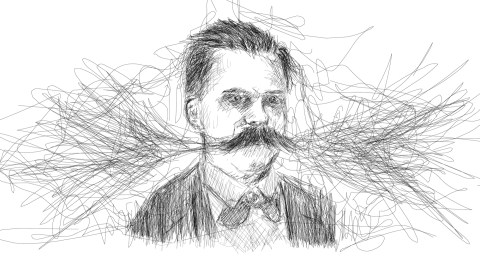The one true world

Reading the mind of God. That’s why I wanted to do theoretical physics as a teenager.
My heroes were giants of the field like Isaac Newton and Albert Einstein. These were researchers who used the most powerful mathematics of their day to see fundamental truths about the nature of the world. Like many aspiring physicists, I thought that the abstractions of integral calculus and differential geometry were a kind of secret language in which the world’s essential truths were written.
So, while I was (and still am) an atheist, I wanted to learn this language so I could read the language of Creation. As I’ve gotten older though I’ve come to reassess that impulse.
Recently my friend—and fellow 13.8 blogger—Marcelo Gleiser wrote for ORBITER about a conversation he’d had with theoretical physicist Sabine Hossenfelder. In her recent book Lost in Math, Hossenfelder takes a critical view of how conceptions of beauty in physics may have led the field astray.
I recently finished Lost in Math and found much to admire. Its critique aligns with concerns Marcelo and I have been expressing for some time now. Thinking again on the appeal of mathematical physics and its call to fundamental truths, I was reminded of how philosopher Friedrich Nietzsche saw the human dilemma.
Nietzsche is, of course, famous in the popular imagination for claiming God is dead. But what most people forget about this line was that it wasn’t uttered in triumph, but rather in a kind of despair. As he wrote in The Gay Science, “God is dead. God remains dead. And we have killed him. How shall we comfort ourselves, the murderers of all murderers?”
This hardly sounds like a victory cry for an unrepentant atheist. What Nietzsche was really concerned with here was God’s purpose in human life. In his view, the idea of God had long provided people with what he saw as the most important human desire—the need for meaning and purpose. That realization led Nietzsche to propose his famous idea of True World theories.
Humans seem fundamentally unsatisfied with this world we find ourselves in. This comes because we are at the mercy of forces we cannot control and because, without fail, we will each have our share of suffering. In response, Nietzsche argued humans throughout history have developed what he called “True World theories.” Behind this unsatisfying world of suffering lies a truer world, a hidden one of harmony, peace and joy (or whatever other attributes you think a better world should have).
According to Nietzsche, most of our religions have been different versions of a True World theory. Certainly, visions of a heaven, to be reached after death, can be called a True World theory. But the secular world has its own versions and visions of “an escape” from this flawed world we find ourselves in. The long history of Marxist utopian ideologies demonstrates this point quite well.
So what do True World theories have to with physics and its search for a true theory of the world? On its own, physics as a science does not really fall under Nietzsche category of a meaning-making endeavor. Physicists do experiments and create theories to explain those experiments. End of story.
But the problem arises when the data part of the equation gets broken. At the forefront of foundational areas in physics—things like particle physics and the study of the very early universe—getting new data has become both very difficult and very expensive. In its absence, theorists have had to use other criteria—like aesthetics—to decide where to look for new descriptions of reality at its most fundamental level. But as Hossenfelder describes in Lost in Math, this may have been poor replacement for data in finding new directions to “the truth.”
But aesthetics don’t occur in a vacuum. Instead, there’s an impulse in the “beautiful” that calls us to aspects of reality we may think of as higher, more pure and more profound. It’s in this way that theoretical physics, when cut off from data, runs the risk of becoming a search for yet another True World theory—another kind of idealized escape from this world.
On its own, this sense that doing physics lets us see behind the curtain of day-to-day reality is not a bad thing. It is what makes doing theoretical physics so much fun. But, of course, part of that appeal is seeing what physics reveals as being more real than this world in front of us. That’s one reason why some physicists are apt to follow Plato’s idea that math is the realm of the perfect Forms.
In a way, even with the close connection with data, physics always had this impulse. After all, physics is based on math, and it was long ago that Plato pointed to math as the realm of the perfect Forms. But as long as there was the vigorous rough and tumble interaction with experiments, the impulse to the True World was forced to keep its feet on the ground. We physicists might have found comfort in the beauty of our math, but at least the world kept having its say.
But now I worry that the frontiers of physics may find itself without the defenses it needs to keep that age-old human urge for meaning—in a True World theory—at bay. Divorced too long from data, the search for a beautiful Theory of Everything can too easily fall prey our hunger for escape. If we’re not careful, it can become a longing not for the reality we find, but the reality we’ve always wanted.
The post The One True World appeared first on ORBITER.





